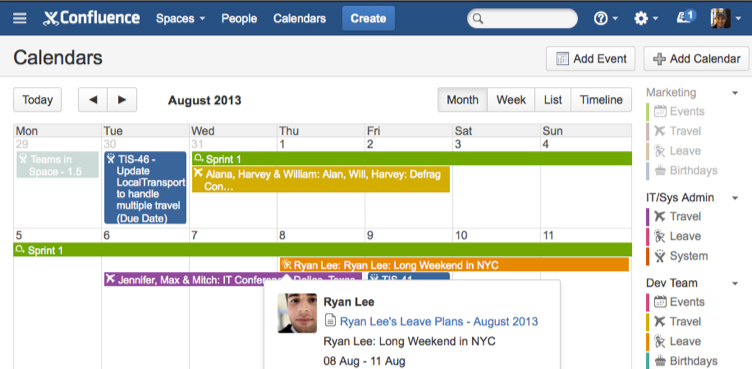An Iteration Planning Meeting is a key ceremony for any Agile team using Scrum during an IT project development phase. It’s where your team comes together to talk about work in the upcoming Iteration and is designed to help deliver a clear focus and direction for the work ahead.
An Iteration is the period of time (usually 1-2 weeks) in which a development team completes a set amount of work. It’s important to keep the duration consistent so your team gets into a solid rhythm.
Who should attend an iteration planning session?
The key people to have in the room include:
A note on terminology: Scrum terminology (such as, ‘Sprint,’ ‘Iteration,’ ‘Scrum Master’ and ‘Iteration Manager’) can be interpreted and interchanged depending on how you like. For the purpose of this blog, however, I’ll refer to the ‘Iterative’ approach rather than ‘Sprints.’ |
- Your Iteration manager – who facilitates the meeting
- Your delivery team (BA’s, Developers, Testers, UX)
- The Product Owner
- Other stakeholders, such as project managers, subject matter experts and representatives from other teams.
Step One: provide an update on the previous iteration session
I like to start each planning session with an update on the previous iteration. This includes visual cues (graphs, tables or pictures) to depict how many points were completed and what’s been delivered already. It’s also a great way to get your team in the right mindset from the outset.
Here’s an example Burn-up chart you could use to display important project information. This shows the current trajectory, required trajectory and points completed in previous iterations.

Step Two: Ensure your team can attend the iteration session
Next on the agenda is a visit to your team calendar. It’s best to plan upcoming work around your team’s availability (leave, events, training, etc.). This keeps your collective goals realistic and ensures you don’t over commit.
Hot tip – the calendar function in Confluence is a great tool for planning team availability.

This is where your team reviews the backlog. All work in the backlog must have a story point or a relative estimate (for example, ‘t-shirt sizing allocated’). Depending on your team’s personal preference, do this before or during the Iteration Planning session.
A popular and fun way to estimate work is to use Planning Poker. Give each team member a hand of cards resembling the Fibonacci sequence (0, 1, 2, 3, 5, 8, 13… and so on). Place a Story on the table and ask everyone to reveal the card that indicates how big they think it is. This assists with planning and quickly achieves team consensus.
Step Three: Prioritisation and velocity
Your delivery team will then work with the Product Owner to prioritise the product backlog and decide what user stories, tasks or spikes to include in the current iteration. This is dependent on your team’s availability, blockers or work carried over from the previous iteration. It’s important to get the Product Owner actively involved in this process as it dictates what features will be delivered, when.
Velocity is calculated by the number of points completed in previous iterations. Once your team has been through a few iterations, they’ll know their average velocity and the number of points they can realistically aim for in the next Iteration.
Step Four: Set goals for your next iteration session
Once you know your team’s capacity, it’s important to set some Iteration goals so your delivery team and stakeholders understand what success looks like. This also helps at the program level by adding clarity and transparency to what each delivery team is working towards.
Remember, goals don’t always need to focus on deliverables. They can also be directed towards elements such as:
- Code Performance within %x
- Risk/Issues mitigation or action
- Up-skilling or Knowledge Transfer of a team member
- Clarification of requirements.
Step Five: Story estimation
Once you’ve agreed on work for the next Iteration, it’s time to allocate stories and tasks to team members for commencement. You can briefly discuss work in this forum and get further clarification from the Product Owner and team members. However, try not to dive too deep into technical details; a high level overview of each story should suffice.
Iteration Planning should be done once per Iteration, either on the first day or a week before the Iteration begins. As a facilitator, you should allow between 1-2 hours to complete the process but there’s really no set time – it’s all about whatever works for your team. Most importantly, have fun and remember to celebrate the previous iteration’s success


